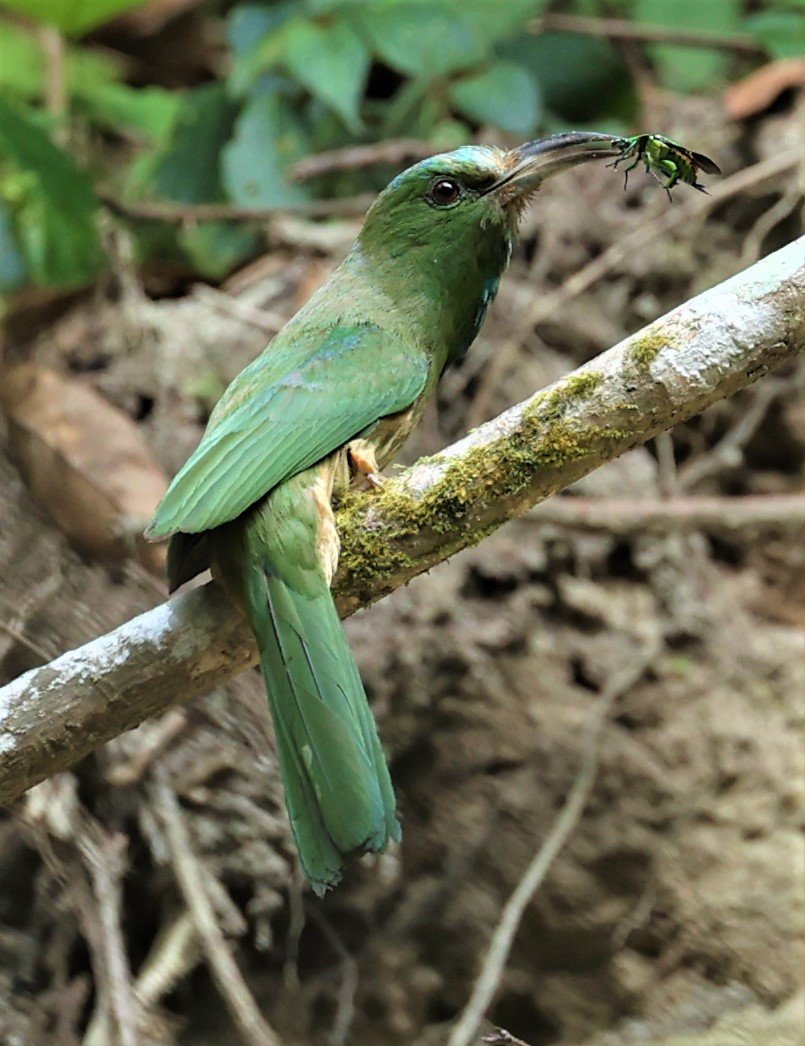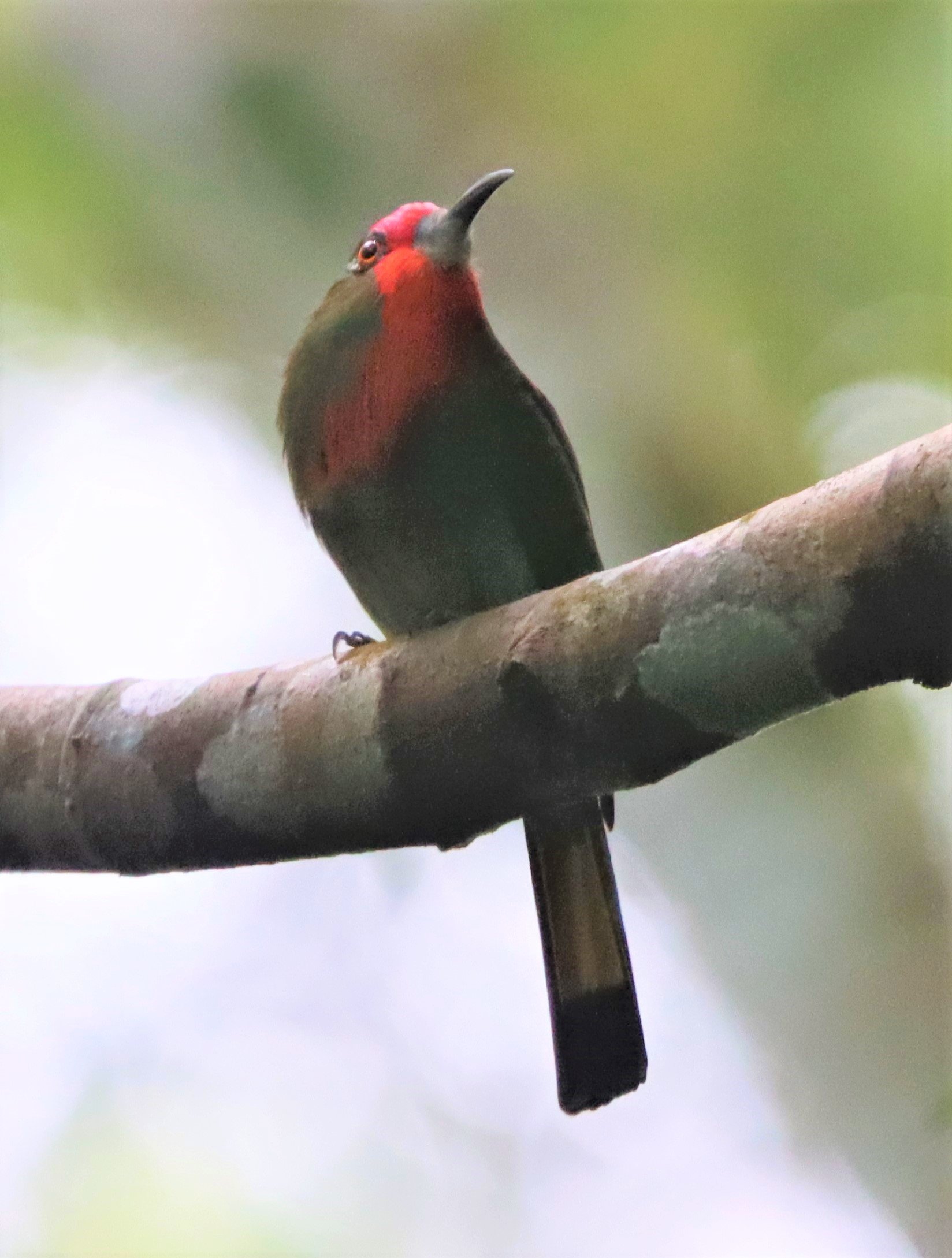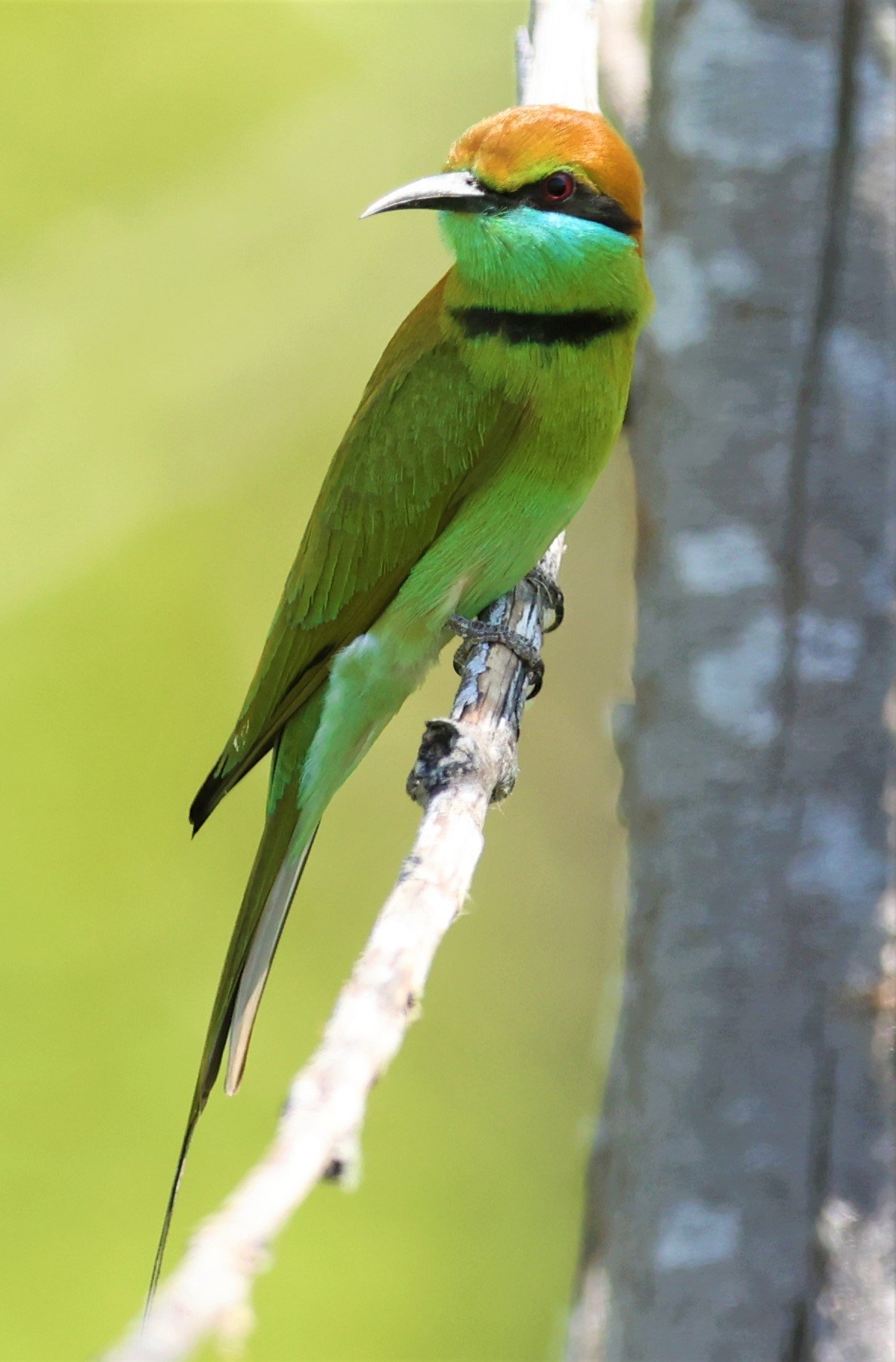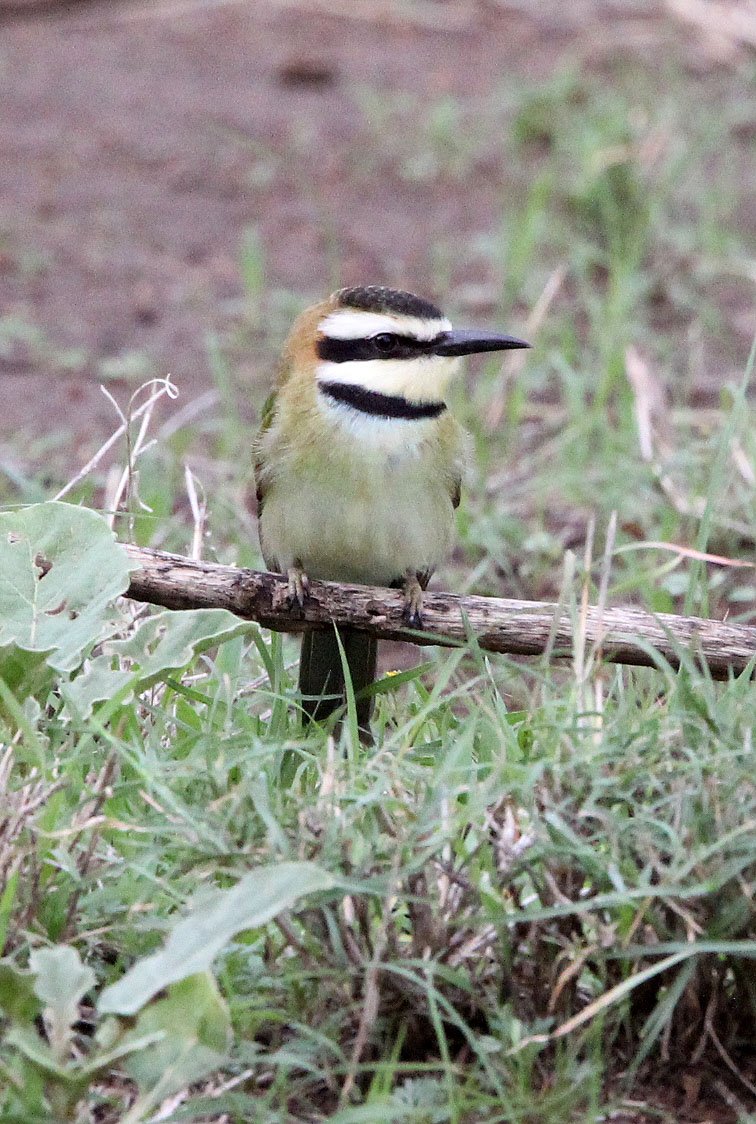
Family Meropidae, Bee-eaters

Blue-bearded Bee-eater preying on a Cetoniinae scarab in Thailand
The Bee-eaters are a group of non-passerine birds in the Family Meropidae, containing three genera and thirty species. Most species are found in Africa and Asia, with a few in southern Europe, Australia, and New Guinea. They are characterised by richly coloured plumage, slender bodies, and usually elongated central tail feathers. All have long down-turned bills and medium to long wings, which may be pointed or round. Male and female plumages are usually similar.
As their name suggests, bee-eaters predominantly eat flying insects, especially bees and wasps, which are caught on the wing from an open perch. The insect's stinger is removed by repeatedly hitting and rubbing the insect on a hard surface. During this process, pressure is applied to the insect's body, thereby discharging most of the venom.
Most bee-eaters are gregarious. They form colonies, nesting in burrows tunnelled into vertical sandy banks, often at the side of a river or in flat ground. As they mostly live in colonies, large numbers of nest holes may be seen together. The eggs are white, with typically five to the clutch. Most species are monogamous, and both parents care for their young, sometimes with assistance from related birds in the colony.
Bee-eaters may be killed by raptors; their nests are raided by rodents, weasels, martens and snakes, and they can carry various parasites. Some species are adversely affected by human activity or habitat loss, but none meet the International Union for Conservation of Nature's vulnerability criteria, and all are therefore evaluated as "least concern". Their conspicuous appearance means that they have been mentioned by ancient writers and incorporated into mythology.
The bee-eaters were first named as a scientific group by the French polymath Constantine Samuel Rafinesque-Schmaltz, who created the bird subfamily Meropia for these birds in 1815. The name, now modernised as Meropidae, is derived from Merops, the Ancient Greek for "bee-eater", and the English term "bee-eater" was first recorded in 1668, referring to the European species.
Red-bearded Bee-eater in Hala Bala, southern Thailand
The bee-eaters have been considered to be related to other families, such as the rollers, hoopoes and kingfishers, but ancestors of those families diverged from the bee-eaters at least forty million years ago, so any relationship is not close. The scarcity of fossils is unhelpful. Bee-eater fossils from the Pleistocene (2,588,000 to 11,700 years ago) have been found in Austria, and there are Holocene (from 11,700 years ago to present) specimens from Israel and Russia, but all have proved to be of the extant European bee-eater.[6] Opinions vary as to the bee-eater's nearest relatives. In 2001, Fry considered the kingfishers to be the most likely, whereas a large study published in 2008 found that bee-eaters are sister to all other Coraciiformes (rollers, ground rollers, todies, motmots and kingfishers). A 2009 book supported Fry's contention, but then a later study in 2015 suggested that the bee-eaters are sister to the rollers. The 2008 and 2015 papers both linked the kingfishers to the New World motmots.
The bee-eaters are generally similar in appearance, although they are normally divided into three genera. Nyctyornis comprises two large species with long throat feathers, the blue-bearded bee-eater and the red-bearded bee-eater, both of which have rounded wings, a ridged culmen, feathered nostrils and a relatively sluggish lifestyle. The purple-bearded bee-eater is the sole member of Meropogon, which is intermediate between Nyctyornis and the typical bee-eaters, having rounded wings and a "beard", but a smooth culmen and no nostril feathers. All the remaining species are normally retained in the single genus Merops. There are close relationships within this genus, for example the red-throated bee-eater and the white-fronted bee-eater form a superspecies, but formerly suggested genera, such as Aerops, Melittophagus, Bombylonax and Dicrocercus, have not been generally accepted for several decades since a 1969 paper united them in the current arrangement.

Blue-bearded Bee-eater (Nyctyornis athertoni) Thailand
Blue-throated Bee-eater (Merops viridis), Thailand, Borneo
Chestnut-headed Bee-eater (Merops leschenaulti), Thailand

Green Bee-eater (Merops orientalis), South & Southeast Asia
Red-bearded Bee-eater (Nyctyornis amictus) Thailand, Borneo
European Bee-eater (Merops apiaster), Tunisia, Spain

Little Bee-eater (Merops pusillus) Sri Lanka, Southern Africa
Madagascar bee-eater (Merops superciliosus)
Northern Carmine Bee-eater (Merops nubicus), Uganda

Swallow-tailed Bee-eater (Merops hirundineus), Southern Africa
Blue-tailed Bee-eater (Merops philippinus), Thailand
Red-throated Bee-eater (Merops bulocki), East Africa

Rainbow Bee-eater (Merops ornatus), Australia
White-fronted Bee-eater (Merops bullockoides) Southern Africa
White-throated Bee-eater (Merops albicollis), Ethiopia
















